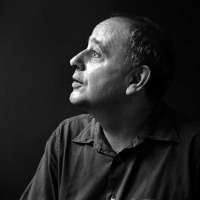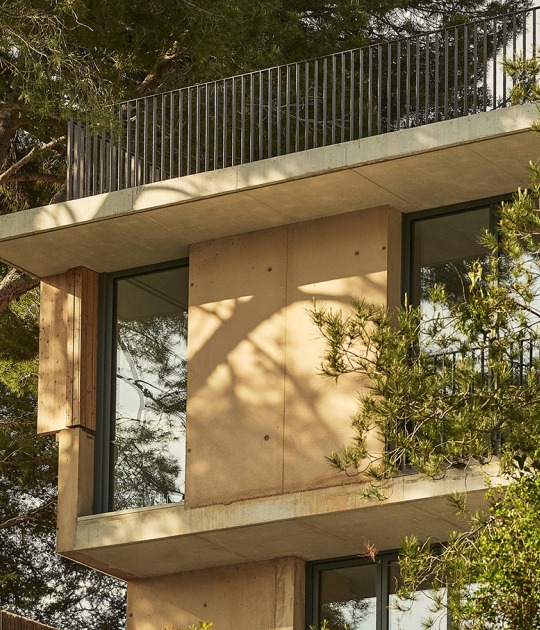The materials used in the project designed by Mateo Arquitectura vary depending on where they are located. Particularly interesting is the black and white brick craft work and its authors dedication. Pascal Dalloux, one of the bricklayers, best explains this in the video below. The garden design follows the same design strategy and is created with different local materials and plants from the meanders of nearby Garonne river.
The housing project gives identity to an anonymous territory on the outskirts of Toulouse and generates a context that its future inhabitants may easily feel as their own.
Description of project by Mateo Arquiectura
In Toulouse, near the airport and the river Garonne.
A housing development that seeks to optimize the living conditions of each of its cells. The whole is broken down to prioritize the meeting with the domestic rather than insisting on the abstraction of the idea.
A complex of four independent but conceptually connected volumes (A, B, C and D) arranged around a semi-private garden.
A formalizes the street leading to it, its volume exaggerating the perspective.
B is detached, in the middle; it has to reflect light inwards.
C twists its volume to construct the corner.
D is lower (three storeys) and light. It encloses the complex at the rear gently, like a fence.
A, B and C are finished in black and white brick, in varying but complementary proportions.
A, on the street tarmac, is mainly black (80% black, 20% white).
B, designed to reflect, is its opposite (80% white, 20% black).
C, at the corner, is balanced (50% white, 50% black).
A, B and C all have zinc roofs with the same pitch, which slide down the rear façade in B.
D, light and soft, has wood.
Based on this reasoning, the buildings were constructed with emphasis on the expressive capacity of artisan work as a sensible framework for human relations.
The garden is a recreation, using characteristic materials (gravels, sands …) and vegetation (poplars…), of the meander of the nearby river Garonne.
Josep Lluís Mateo
PROJECT DATA.
Author.- Josep Lluís Mateo - Mateo Arquitectura.
Client.- KAUFMAN & BROAD.
Project.- 2011-2012.
Construction.- 2012-2013.
Location.- ZAC Andromède, Toulouse. France.
Surface.- 13,628.00 m²
Structural Engineering.- BOMA Inpasa.
Landscape.- Manuel Colominas.
Craftsmanship in action. 1
Housing in Toulouse, France, by Josep Lluís Mateo. Interview with Pascal Dalloux from Les briqueteurs reunis.







































